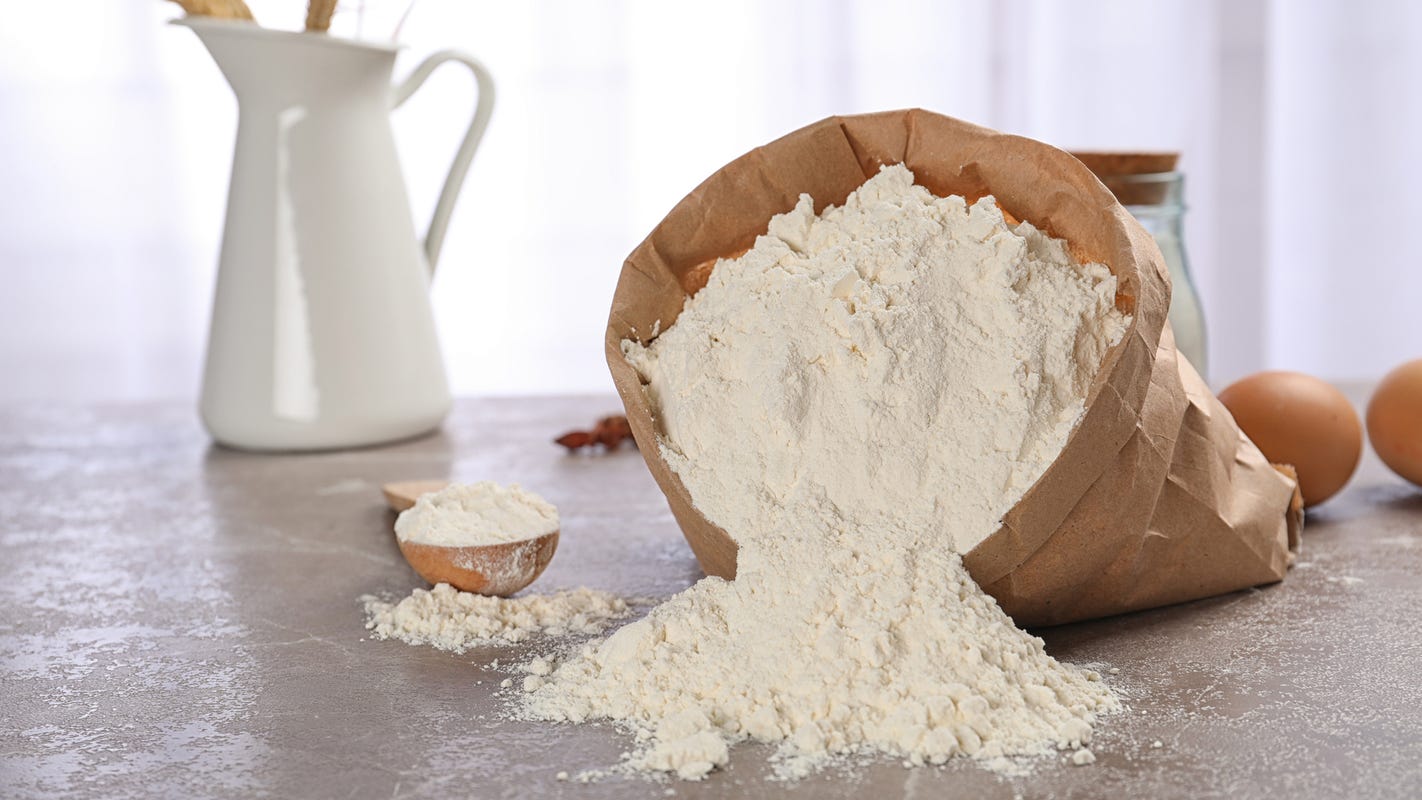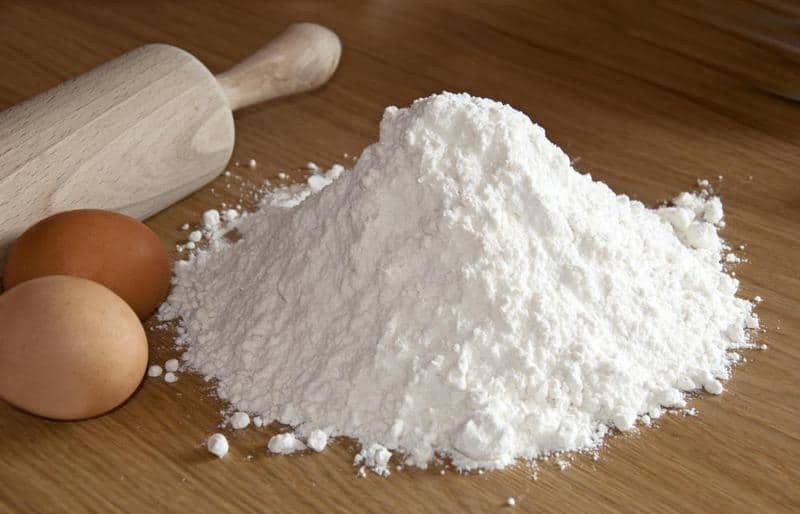AI-Generated Article
This content has been automatically generated using artificial intelligence technology. While we strive for accuracy, please verify important information independently.
Baking, you know, it's pretty much a kind of kitchen magic. It takes simple things and makes them into something truly delicious. At the very core of so many wonderful baked goods, you will find one ingredient that really does a lot of work. That ingredient, you might guess, is flour. It is, in some respects, the backbone for many things we love to eat.
From the crusty bread that starts your day to the sweet cookies that end it, flour plays a part in a lot of dishes. It is a powder, as a matter of fact, that comes from grinding various raw bits. These bits could be grains, or roots, or beans, and even nuts or seeds. Basically, flour is a staple ingredient. It has a big role in kitchens everywhere, you see.
Knowing a little more about this ingredient can make a real difference in your cooking, that is for sure. It helps you pick the right kind for what you are making. You can learn what makes one flour different from another. This knowledge, honestly, helps you get the baking outcome you are hoping for. So, let us talk a bit about what is in your flour box.
Table of Contents
- What Exactly is Flour Anyway?
- The Heart of "the flour box" - Grains and More
- Why Does Flour Matter So Much?
- Getting Creative with "the flour box"
- How Do Flours Differ from Each Other?
- Picking the Right Flour for "the flour box"
- What About Special Flour Kinds?
- Understanding "the flour box" for Your Recipes
What Exactly is Flour Anyway?
Flour, you know, is pretty much a fine powder. It is made by taking raw things and grinding them down. These raw things, you see, can be quite varied. They might be grains, for instance, like wheat or corn. They could also be roots, perhaps like cassava. Sometimes, they are beans, or even nuts, or maybe seeds. So, it is not just one thing that becomes flour, but many.
Different kinds of flour come from these different sources. Each source, as a matter of fact, gives the flour its own special qualities. This means that a flour made from one thing will behave differently from a flour made from another. It is quite interesting, really, how much variety there is in something that seems so simple. This variety, naturally, is what makes flour so versatile in cooking. It truly is a fundamental part of many dishes we enjoy.
The Heart of "the flour box" - Grains and More
When you look inside your flour box, you will find that cereal flour is a very common type. Wheat flour, in particular, is a really big deal. It is, basically, the main ingredient for bread. Think about it, most bread starts with wheat flour. This makes wheat flour a truly important item to have around. It is used in so many different ways, you know.
But the flour box holds more than just wheat flour. There are flours from oats, rice, and corn, too. Each one brings its own unique taste and texture to whatever you are making. For instance, corn flour might be used for tortillas, while rice flour could be good for certain kinds of noodles or sweets. It just goes to show, there is a lot to consider when you are picking out your flour, you see. It is not just one size fits all, not at all.
Why Does Flour Matter So Much?
Flour, honestly, is one of those ingredients that cooks and bakers reach for almost every time. It is a truly essential item in nearly all recipes that involve baking. If you are making a cake, you will probably need flour. If you are making biscuits, flour is a key part. Cookies, too, often call for flour. And cakes, well, they definitely need it. Baking, in a way, is the skill of taking flour and making it into something new and tasty.
It is the ingredient that provides the main structure for many foods. Without it, things would not hold together in the same way. It gives a dish its form and shape. This is why it is so important to understand what flour does. It is not just filler; it is what gives a baked good its character. So, it is pretty clear why it matters so much in the kitchen, you know.
Getting Creative with "the flour box"
Flour does a lot more than just make bread. It is a staple ingredient, as a matter of fact, in a huge number of recipes. It serves many different purposes in the cooking world. For example, it helps to create the structure and feel of a dish. Think of how a cake feels light and airy, or how a cookie is crisp. Flour helps make that happen, you see.
It also works to make sauces and batters thicker. If you are making a gravy, you might add a little flour to give it body. If you are making pancakes, flour helps the batter get just the right consistency. So, the flour box is not just for baking sweet treats. It is also used for savory dishes, which is pretty cool. It shows just how useful this simple powder can be in so many different cooking situations.
How Do Flours Differ from Each Other?
It can be a bit confusing sometimes, trying to figure out the differences between all the types of flour. Do you know, for instance, what makes one kind of flour distinct from another? It is a common question, really. Each type of flour has its own special qualities that make it suitable for certain kinds of cooking. Learning these differences can really help you get better results in your kitchen endeavors.
Some flours, you see, have more protein. Others might have less. Some are processed in different ways. These small differences can lead to big changes in the final product. For example, a flour with higher protein will act differently when mixed with water and baked. It is all about how the flour behaves, which is pretty interesting when you think about it. So, let us talk about some of these distinctions.
Picking the Right Flour for "the flour box"
Knowing how different kinds of flour vary from each other is quite helpful. It tells you when to use each one for the best results. For example, if you are making cakes, you might want a certain kind of flour. If you are making bread, a different kind will work better. Pizza dough, too, has its own flour needs. And pasta, well, that is another story altogether.
It is not always easy to pick the right flour for every cooking job. There are so many choices, you know. But we can look at some common and popular types. This can help make your cooking a little easier. It is all about matching the flour to the food you want to make. This helps you get the texture and taste just right. So, understanding your flour box is a pretty good idea, honestly.
What About Special Flour Kinds?
When you look at different flours, you will often hear about things like "bread flour" or "unbleached flour." These are not just fancy names; they tell you something about the flour itself. For example, bread flour, as a matter of fact, has more protein in it. This higher protein content is what makes it really good for making bread. It helps the bread get that chewy texture and good structure.
Then there is unbleached flour. This is, basically, flour that has not been treated with chemicals to make it super white. It is simply not as white as flour that has been bleached. It often has a slightly off-white or creamy color. Some people prefer it for its more natural state. So, these are just a couple of examples of how flours can differ, even within the same general type. It is good to know these things, you see.
Understanding "the flour box" for Your Recipes
Flour is a truly important ingredient in so many recipes. It serves a lot of different purposes in the kitchen. It is not just about making things taste good; it is about how they feel and hold together, too. From helping to create the structure of a baked good to making sauces thicker, flour plays a really big part. It is a versatile item, you know.
Knowing the specific qualities of different flours can really help you get the best out of your cooking. Whether you are aiming for a light cake, a crusty loaf of bread, or a smooth sauce, the right flour makes a difference. So, when you open your flour box, think about what you are making and choose wisely. It is a simple step that can lead to some really great results, honestly. It is all about getting the best outcome for your efforts.
🖼️ Related Images
.jpg)


Quick AI Summary
This AI-generated article covers The Flour Box - Your Guide To Baking Success with comprehensive insights and detailed analysis. The content is designed to provide valuable information while maintaining readability and engagement.
Dr. Lorenz Zemlak
✍️ Article Author
👨💻 Dr. Lorenz Zemlak is a passionate writer and content creator who specializes in creating engaging and informative articles. With expertise in various topics, they bring valuable insights and practical knowledge to every piece of content.
📬 Follow Dr. Lorenz Zemlak
Stay updated with the latest articles and insights